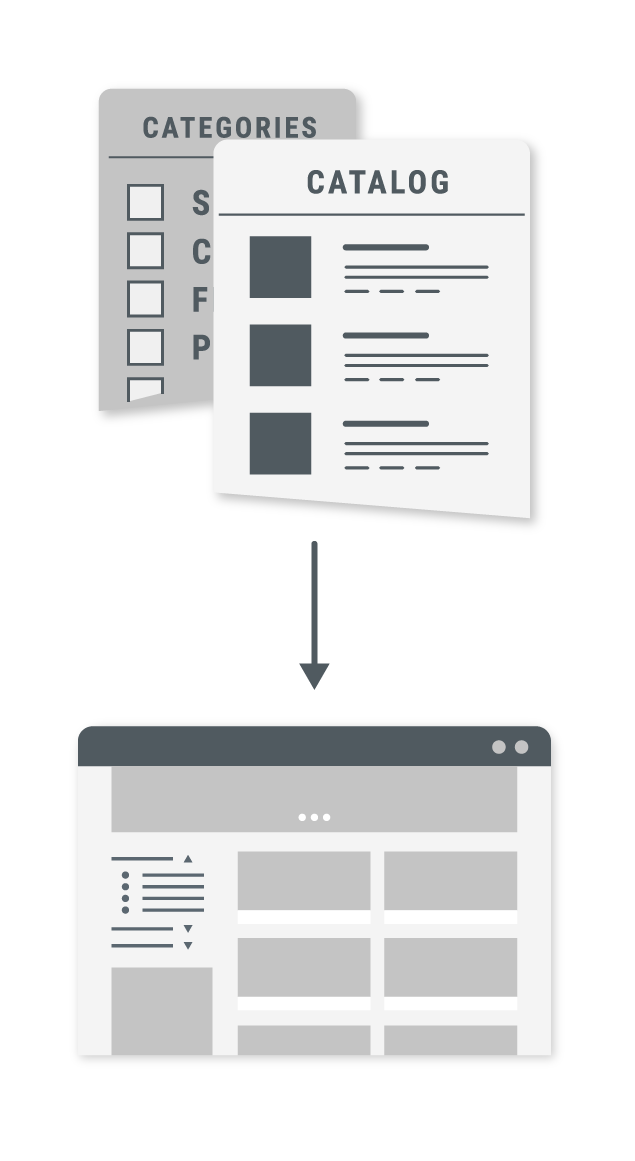the secret to b2b ecommerce success: catalog management
Catalogs Are a Core function of B2B Sales Models
While B2B ecommerce remains a hot topic and a growth area for both manufacturers and distributors, there is a growing dissatisfaction with the ecommerce platforms they are running. 40% of distributors plan to update or replace their ecommerce platforms, and 51% of manufacturers list business model complexity as the biggest challenge to achieving ecommerce ambitions, according to Digital Commerce 360.
What is driving this dissatisfaction? Managing the complexities of delivering a great B2B ecommerce customer experience, which includes a growing frustration with catalog management limitations.
Why Catalog Management Matters
B2B ecommerce is more complex. Manufacturers and distributors need to serve the correct catalog (product assortment) to the right customer; however, each merchant typically has many customer types depending on the respective business models. Customer-driven catalog types include:
Segments (also known as user profiles)
Manufacturers and large distributors serving a variety of industry segments must show relevant products to each specific segment. This is especially true if there is a limited crossover of products by segment or unique product attributes by segment. For example, buyers of electrical products do not need to see a distributor’s master catalog that includes industrial, plumbing, and HVAC products.
Third-party Marketplaces
Creating and managing third-party marketplace catalogs and syndicating these catalogs is a common use case for manufacturers and distributors. Managing these centrally on an ecommerce platform reduces the need for additional technology stacks, integrations, and staff, ultimately reducing the total cost of ownership.
Regional
Regional catalogs allow for product assortment based upon product application. For example, snow removal products and aftermarket parts don’t sell well in the southeast, but lawn care products are in demand year-round.
Territory
It is commonplace for distributors to represent various manufacturer brands, each with its exclusive territory. Of course, these unique brands don’t necessarily have territories that align, which causes the need to display catalogs by brand, regional profile, or territory profile. Similarly, manufacturers also need to limit what distributors may purchase based upon territory.
Global
Manufacturers and distributors need the ability to display catalogs by country or region. These merchants must also still be able to account for other factors such as territory, segment, currency, and of course, language.
Discreet Catalogs
Manufacturers and distributors that create customized or account-specific products or enhance products as part of the distributor value proposition need the ability to manage specific catalogs by customer.
Program Management
Program management is standard in industries where sellers and buyers collaborate to create unique product formulas or specifications. Ecommerce allows buyers to purchase products that fit these specified programs. These are often B2B2X business models with strict compliance rules mandating that buyers must only be able to purchase from their specified assortment. Program management is standard in the following industries:
- Foodservice distribution
- Ingredient manufacturing and distribution
- Chemical manufacturing and distribution
- Uniform manufacturing and distribution
- Promotional product distribution
- Government programs
Multiple Brands
Manufacturers, distributors, and holding companies often own or represent multiple brands with a need for brand-specific ecommerce websites. These websites need unique catalogs and may also inherit other complex catalog needs described above.
Why is catalog management so complex?
If the case for catalog management is so clear, why is this so difficult for many B2B merchants? The answer is the data model.
Most ecommerce platforms were designed to sell to a single audience: consumers. One giant catalog.

The need for multiple catalogs did not exist until B2B ecommerce was available at scale. As software companies now shift and market platforms to serve B2B use cases, the core data architecture of the platforms has not changed. Only the platform marketing has changed.
Blank Check
Of course, all problems can be solved in technology by bundling together systems and lots of custom code. A platform with a B2C data model, a third-party PIM, lots of custom logic, and… an expensive custom solution is born. All problems are solved, but a whole new set of maintenance problems are born.
A Better Way to Manage Catalogs
Designed for the complex needs of B2B ecommerce, Znode has a data model that natively supports managing multiple catalogs.

At the core of Znode is a digital PIM specifically designed to manage ecommerce catalogs and deliver the right assortment of products to the right audience, ensuring an incredible customer experience. Unlimited catalogs can be created and displayed based upon account, user profile (segment), and web store. In addition, Znode allows for multi-store management, and catalogs may also be applied to one store or many stores and viewed based upon roles.
Catalogs are a core function of B2B sales models and must be a core feature of any B2B ecommerce platform.


